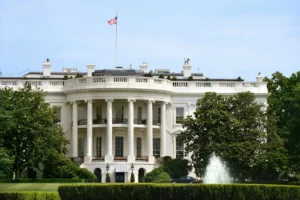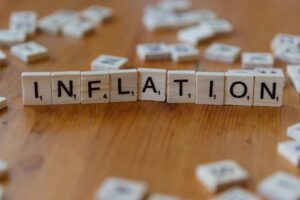The Nikkei is down 12% this year, says Michael Wilson, and optimism is thin on the ground. But You Know What They Say About the Darkest Hour and the Dawn
April is such a beautiful month in Japan. The spring sunshine, the cherry blossom . The lovers in the parks. The sheer unquenchable optimism of it all.
Alas, for Japanese households, April is also the start of a new tax year – and this year, a painful rise in sales taxes, which went up from 5% to 8% on 1st April, with another rise to 10% scheduled for October 2015. That might not sound so bad to us, given that we pay 20% VAT over here – but take our word for it, it’s been enough to scare Japan’s economists quite badly. Japan’s consumer sales growth is barely scraping along at zero as it is, and the last time anybody raised the tax (from 3% to 5%, in 1997), the uproar was enough to pitch the government of Ryutaro Hashimoto prompt out of office.
This time there isn’t much chance that the incumbent premier, Shinzo Abe, will be in any such danger. His ruling coalition holds a secure majority in the Japanese Diet (parliament), and nobody is seriously doubting that Abe has undertaken the boldest, and perhaps the most necessary, economic experiment since the 1960s. It’s just that the pain is getting a little too great for comfort. And a drop in consumption is just about the last thing Japan needs right now. So what are the prospects for fund managers in this situation?
Possibly not as dire as the worst pessimists are insisting, according to some. There are some important systemic changes coming through, both for companies and for the liquidity of the stock market itself. And anyway, when was the last time you saw the Tokyo stock market on a price/earnings ratio of 12?
Three Arrows
Here’s the good news. Mr Abe is now nearly 18 months into an extended programme of economic reforms which have made a sincere and convincing effort to finally overcome the stagnation and apathy that seem to have dominated the country for the last 23 years.
Abe’s most familiar headache, of course, has been the hideous government debt mountain – well over 200% of the national GDP – which resulted from a failed attempt to reflate the economy after the bust of 1990. That disaster, of course, had seen the Nikkei drop from almost 40,000 back to 7,500 and below, and no amount of Keynesian splurging had put it to rights.
Anyway, nobody was ever likely to invest in new industrial ventures – or in a new sofa, come to that – while the economy was being pushed into the ground by such a vastly depressing burden. And it had to change.
So, to give Mr Abe his due, his “three arrows” policy for stabilizing the dire situation were welcomed by all – and even today, as Japan’s economic growth continues to miss its targets, they still look like the best way forward. The trouble is that it will probably take more than Abe reckoned to get the confidence back onto the high streets.
The “three arrows,” broadly speaking, consist of an aggressive monetary policy; a flexible fiscal spending policy; and further measures to spur private investment. Most notably, the essential pillar of ‘Abenomics’ consists of a commitment to stimulating demand with a vast asset purchasing program, equivalent to 60-70 trillion yen (around $8 trillion) per year, with the explicit aim of raising the inflation level to 2%.
Let’s put that truly vast figure into a more meaningful perspective. In April 2013, exactly a year ago, the Bank of Japan said that it aimed to expand Japan’s monetary base to 270 trillion yen by the end of 2014 – an enormous 95% increase from the 138 trillion yen at the end of 2012.
So far, the programme seems to be on track. BOJ figures say that the monetary base had reached 205 trillion yen by the end of February 2014. Compared with a projected 200 trillion yen at the end of 2013.
Yes, the monetary base has risen by more than 48% since the end of 2012. How do we account for the fact that so little of it seems to be finding its way into people’s pockets? Or is it simply that the wealth is being spent by businesses in ways that haven’t reached the consumer yet?
Personally, I prefer the latter explanation. But Japan’s intensely bureaucratic structures have had a discreet way of ‘disappearing’ any proffered subsidies in the past, and I’d want to see a rea sense that this was about to change.
Dr Nikkei’s Diagnosis
Maybe the Nikkei 225 will give us a few clues. From a recent high of 16,291 on 30th December 2013, the index flopped disastrously down to 14,224 by the final week of March – a 13% fall which largely wiped out the progress of the last twelve months. Hence the p/e of 14.
You can’t lay the blame for all of this at Mr Abe’s door. Japan is still suffering serious power shortages as a result of its nuclear power plants being closed – the aftermath of the March 2011 meltdown at Fukushima. And the economic slowdown in China has done much to undermine Tokyo’s hopes of quickly exporting its way back to health. But, combined with a drastic cut in government spending (of which more anon), and a deliberate weakening of the yen which had pushed up the price of imported oil for Japanese industries, it was all a bit too much for some people.
Already, government economists are predicting that Abe’s entirely sensible fiscal tightening programme will chop the equivalent of 2.5% off the country’s gross domestic product this year – followed by another 1% in 2015. If true, that would cut GDP growth from 2.5% last year to only 1.4% this year.
And will the consumers take up the slack? That seems unlikely, for reasons we’ve examined. How about the US export market, then? Also a tough call at a time when Barack Obama is hanging tough on imports and onshoring manufacturing jobs.
The Bad News
Sadly, the spring omens have not been helpful. It was announced on February 17th that the country’s fourth quarter GDP in 2013 had been downgraded to only 1.0% on a real annualised basis – a very long way below the 2.8% that economists had expected. Coming on top of a lacklustre 1.1% annualised performance in the third quarter, the news had been enough to stamp on the loose talk that had been circulating about how Japan was expanding more rapidly than any other G7 economy.
At present, the official explanation is that exports were poor. Domestic demand and government spending had been robust, it was claimed, and had boosted growth by 3% between them. But a nasty fall in the trade surplus had hit the balance by a painful 1.8%. (Remember, more than half of Japan’s exports are destined for emerging markets, which are all suffering.) In any case, it all raised a thoroughly pertinent question as to what exactly had been gained by Mr Abe’s plan to devalue the yen?
Because make no mistake, the yen has been weakening fast. In October 2012, when Mr Abe began his economic reform programme, it was trading at 78 to the US dollar. But by March 2014 it was down to 103.5 – a 32.7% downward movement. And suddenly, it seemed, the foreign pundits who had been calling Japan a seriously undervalued market had gone rather quiet.
The Better News
Is there an upside to all this? It does seem hard, but let’s keep looking. There’s been a general increase in household spending, which grew by 0.5% during the final quarter of 2013. Apocryphal reports suggest that more Japanese shoppers are buying mid-range products where they might once have opted for economy.
A more encouraging noise is coming from the Central Bank, which has been implying recently that it will step up the quantitative easing programme so as to counter any drop in consumer spending that might result from the rise in sales taxes. On the plus side, it suggests that Mr Abe is taking the situation seriously and is prepared to balance things carefully; on the minus side, it makes him sound like the cook who adds red wine to a sauce and then feels immediately compelled to counterbalance the wine’s acidity with another spoonful of salt. Or am I being too unfair?
In the meantime, the “third arrow” – encouraging Japanese companies to transfer wealth into the economy – is now getting under way. Last October, the government revealed a 5 trillion yen ($51 billion) programme of incentives and tax breaks, aimed at getting them to start distributing their growing profits and their substantial cash buffers through higher wages and new projects which it’s hoped will be the key to rebuilding confidence.
For better or worse, we can confirm that there is one group of Japanese manufacturers who are stepping up their investment programmes substantially. Industrial corporations which produce goods in China, India, Vietnam and also the United States are piling money into their foreign operations – the only snag being that most of these will ultimately create jobs in other parts of Asia instead of at home.
Better Foreign Relationships
If nothing else, this increasing foreign interest has persuaded Mr Abe himself to tone down his anti-Chinese rhetoric and to try a little harder to get on with his trading partners. Japan’s spat with China over the Senkaku islands has gone noticeably quiet recently, and his recent statement upholding Japan’s apologies for its actions during World War II has done much to soothe jangled nerves in Beijing and Seoul, after last year’s ill-considered decision by Abe to visit a Japanese war shrine where many war criminals were interred. These things matter a lot.
A NISA Future?
Yes, there are still reasons for optimism. A report by Baillie Gifford’s Japan team concluded in January that there were “Reasons for continued optimism in Japan” (http://tinyurl.com/pkk6wun), and that the market was unfairly focusing on ”short term distortions to demand”, such as the sales tax increase – but that the longer term implications were “very positive”.
The government, it noted, had now introduced a system of ISAs, known as Nippon ISAs or NISAs, which it said should encourage the long-awaited switch from savings in bank deposits to equities, and area where relatively few Japanese nationals had ever ventured. And that these new investments had the potential to drive a revival of Japanese stocks.
That’s correct, by the way. Bank of Japan data show that only 8.5% of Japanese households’ financial assets are currently in shares, compared with 32.7% in America and 15.9% in the euro area. Japanese households have hitherto preferred government bonds (JGBs) – another reason, incidentally, why Japanese bonds, and shares too, have been able to pay such very small yields in the past. But if the optimists are right, NISA may turn out to provide exactly the boost that the market needs.
“Overall,” the report goes on, “there are many changes both in the economy and in less visible subtle sea-changes in attitudes which we believe are encouraging. It is not that ‘old’ Japan has vanished, but it is smaller and less important and can be ignored, particularly by active investors such as ourselves.”
High points? Baillie Gifford says it “continues to find exciting opportunities in internet related areas and in companies whose business model attacks the old and inefficient.”
That’s a view which seems to be supported by the relatively stable performance of smaller companies in today’s generally bearish environment: the iShares MSCI Japan SmallCap UCITS ETF (sterling) had lost only 3.9% during the first twelve weeks of 2014, compared with 13% for the Nikkei. More interesting, perhaps, was the fact that it rose by 23% last year and – crucially – held onto its gains.
Whatever it is that’s driving these smaller companies, let’s have more of it. And soon, please.








![[uns] house of commons, parliament](https://ifamagazine.com/wp-content/uploads/wordpress-popular-posts/788182-featured-300x200.webp)






